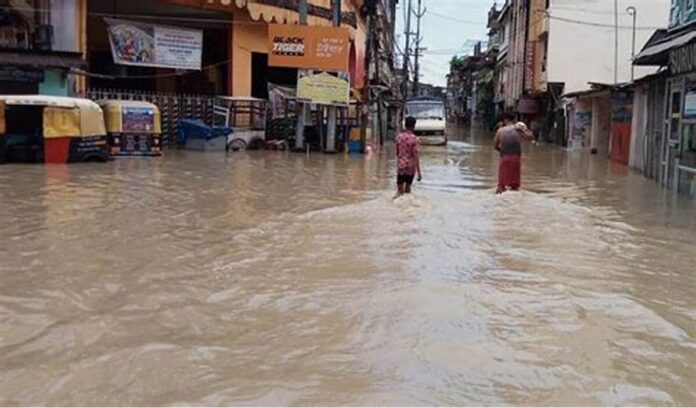In the northeastern state of Assam, the annual monsoon season brings a mix of relief and despair. This year, the Dima Hasao district finds itself battling the fury of nature as heavy rainfall inundates the region, leading to waterlogging, landslides, and disruptions in vital services like railways.
Over the past weeks, incessant rainfall has transformed the picturesque landscapes of Dima Hasao into scenes of distress and destruction. Rivers have swelled beyond their banks, flooding nearby areas and submerging homes and farmlands. Urban areas are grappling with waterlogging, while rural communities face disruptions in daily life and risks to livelihoods.
The impact extends beyond the district, affecting crucial transportation networks. The Northeast Frontier Railway, a lifeline for connectivity in the region, has faced severe disruptions. Tracks have been submerged, bridges weakened, and landslides rendered several sections impassable. Train services linking Dima Hasao with other parts of Assam and neighboring states have been suspended, further isolating affected communities.
Efforts in relief and rehabilitation are underway, with government agencies, NGOs, and volunteers mobilizing to provide assistance. Relief camps have been set up to shelter displaced families, while rescue operations evacuate people stranded in inundated areas. Authorities are working to restore essential services and repair damaged infrastructure, but the task is daunting given the magnitude of devastation.
Long-term solutions are imperative. Investing in resilient infrastructure, sustainable land-use practices, and community-based disaster preparedness programs can mitigate the impact of floods and protect vulnerable communities. As Assam rebuilds in the aftermath of the floods, concerted efforts are needed to build resilience and safeguard the well-being of its people against future disasters.
In addition to the immediate challenges posed by the floods, there are also long-term environmental and socio-economic implications to consider. The loss of agricultural land due to flooding can have lasting effects on food security and the livelihoods of farmers, many of whom are already marginalized. The destruction of infrastructure disrupts not only transportation but also access to education and healthcare, exacerbating existing disparities in the region.
Furthermore, the floods highlight the urgent need for holistic approaches to climate change adaptation and mitigation. Assam, like many other regions worldwide, is experiencing more frequent and intense extreme weather events due to climate change. Addressing the root causes of climate change through mitigation measures such as reducing greenhouse gas emissions is crucial to prevent further escalation of such disasters. Additionally, adaptation strategies that take into account the local context and involve communities in decision-making processes are essential to building resilience and ensuring sustainable development in the face of a changing climate.



